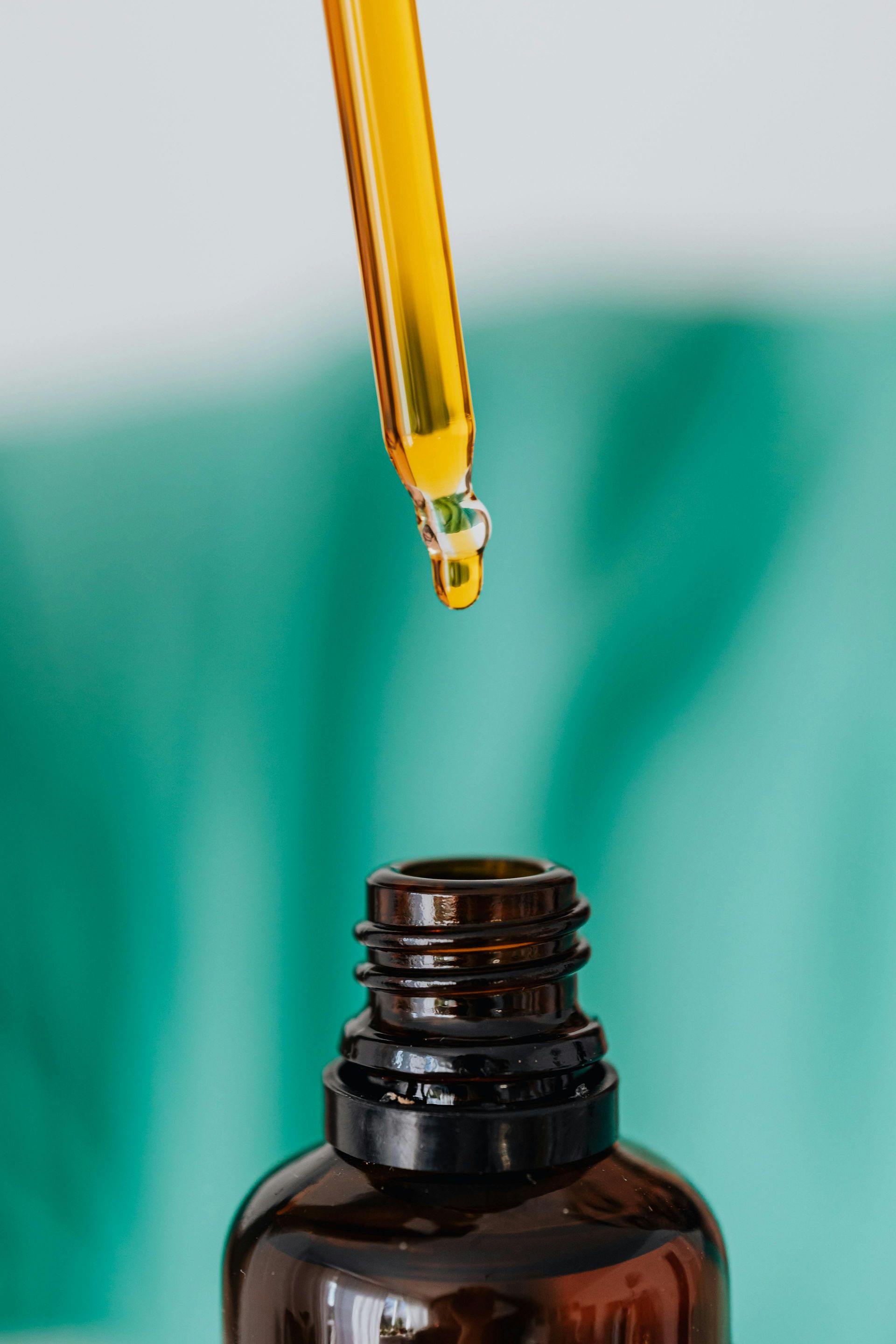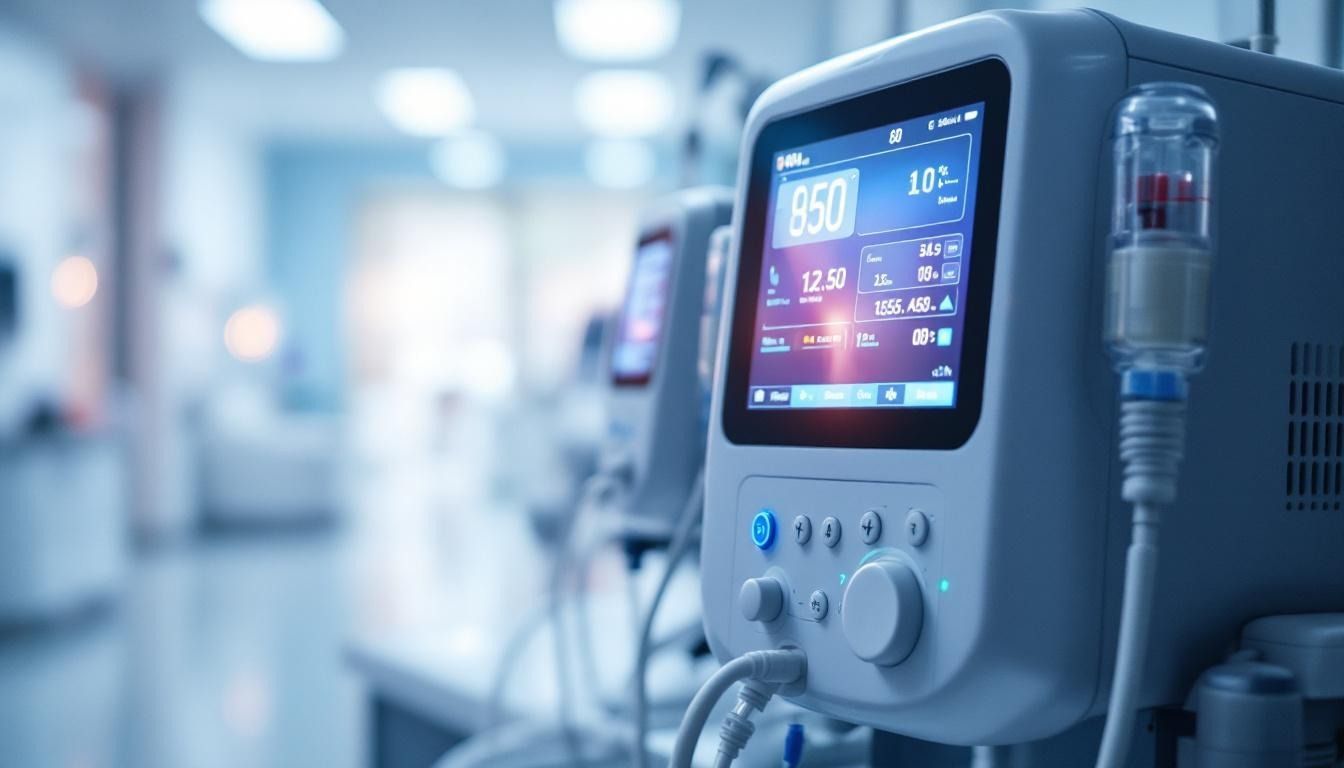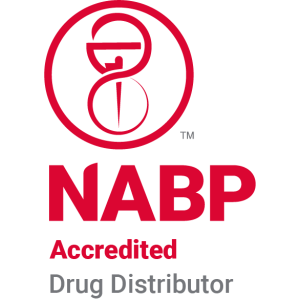Total Parenteral Nutrition and Liver Dysfunction: Key Management Strategies
Understanding the Impact of TPN on Liver Health
Total parenteral nutrition (TPN) is an essential therapy for patients with gastrointestinal impairments, providing vital nutrients intravenously when enteral feeding is impossible or inadequate. While lifesaving, long-term TPN use is associated with various complications, notably liver dysfunction or parenteral nutrition-associated liver disease (PNALD). An in-depth understanding of TPN delivery methods, mechanisms underlying liver injury, and evidence-based management strategies is crucial for clinicians aiming to optimize patient outcomes and prevent severe liver complications.
Administration of TPN and Its Components
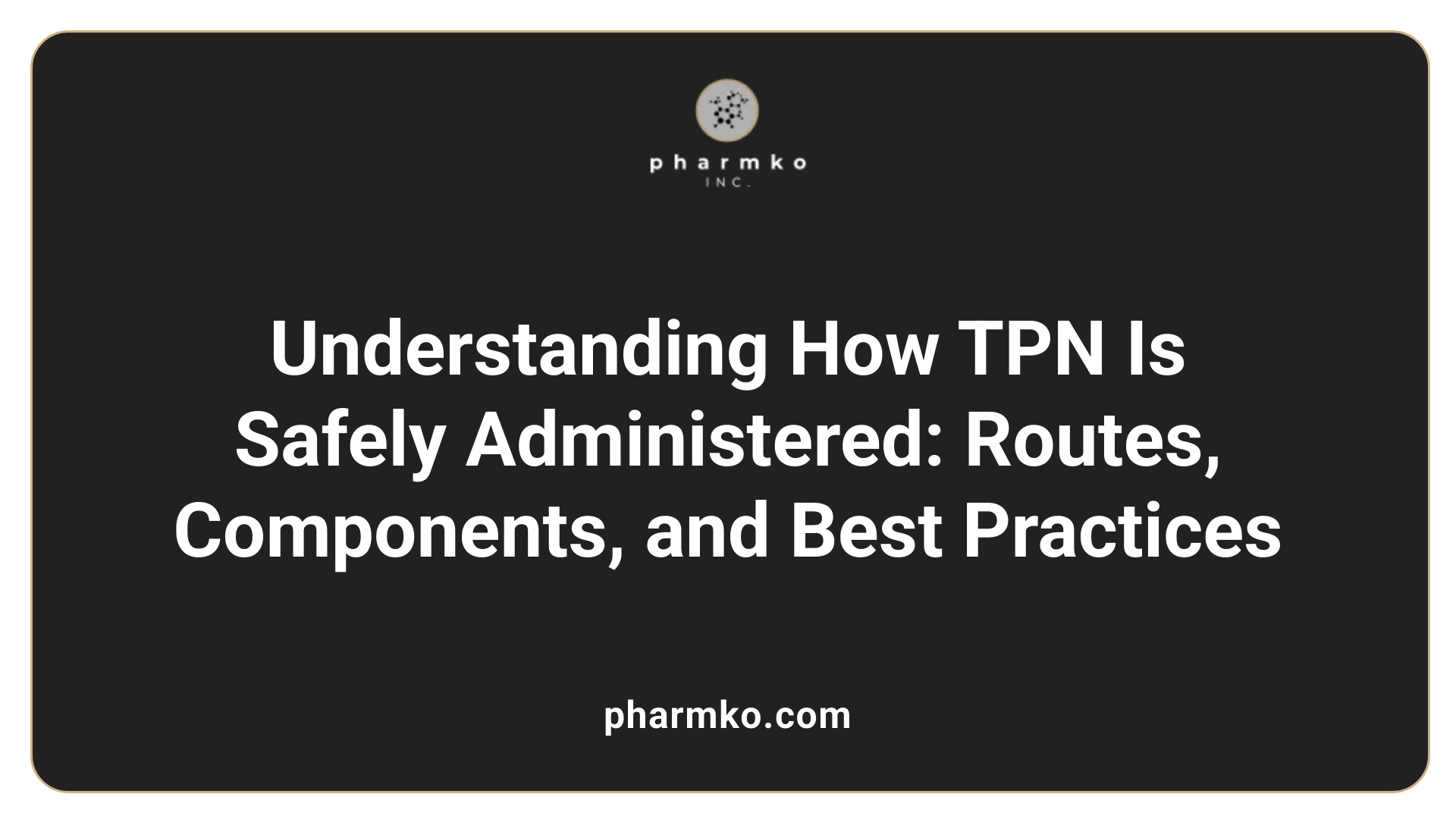
How is TPN administered, and what does it involve?
Total parenteral nutrition (TPN) is delivered directly into the bloodstream through a specialized intravenous line. This method bypasses the gastrointestinal tract entirely, making it suitable for patients who cannot be nourished via oral or enteral routes.
The administration of TPN requires a central venous access because of the high osmolarity of the solutions. This access is typically a catheter placed into a large vein such as the subclavian or internal jugular vein, called a central line.
TPN involves several nutritional components tailored to meet individual patient needs. These components include:
| Nutritional Element | Purpose | Additional Details |
|---|---|---|
| Lipids | Provide essential fatty acids and calories | Usually administered as lipid emulsions like soybean oil, fish oil, or mixed emulsions |
| Dextrose | Primary carbohydrate source for energy | Concentration is adjusted based on patient energy requirements |
| Amino Acids | Supply essential and non-essential amino acids | Formulated to support tissue repair and maintenance |
| Vitamins and Trace Elements | Support metabolic processes and immune function | Includes vitamins A, D, E, K, B complex, and minerals like zinc, copper, manganese |
| Electrolytes and Minerals | Maintain fluid balance and cell function | Regularly monitored and adjusted for patient needs |
TPN solutions are meticulously prepared in sterile environments to prevent infection and ensure correct balance of nutrients. Proper administration and monitoring are crucial to achieving nutritional goals while minimizing adverse effects.
Complications and Risks of Parenteral Nutrition
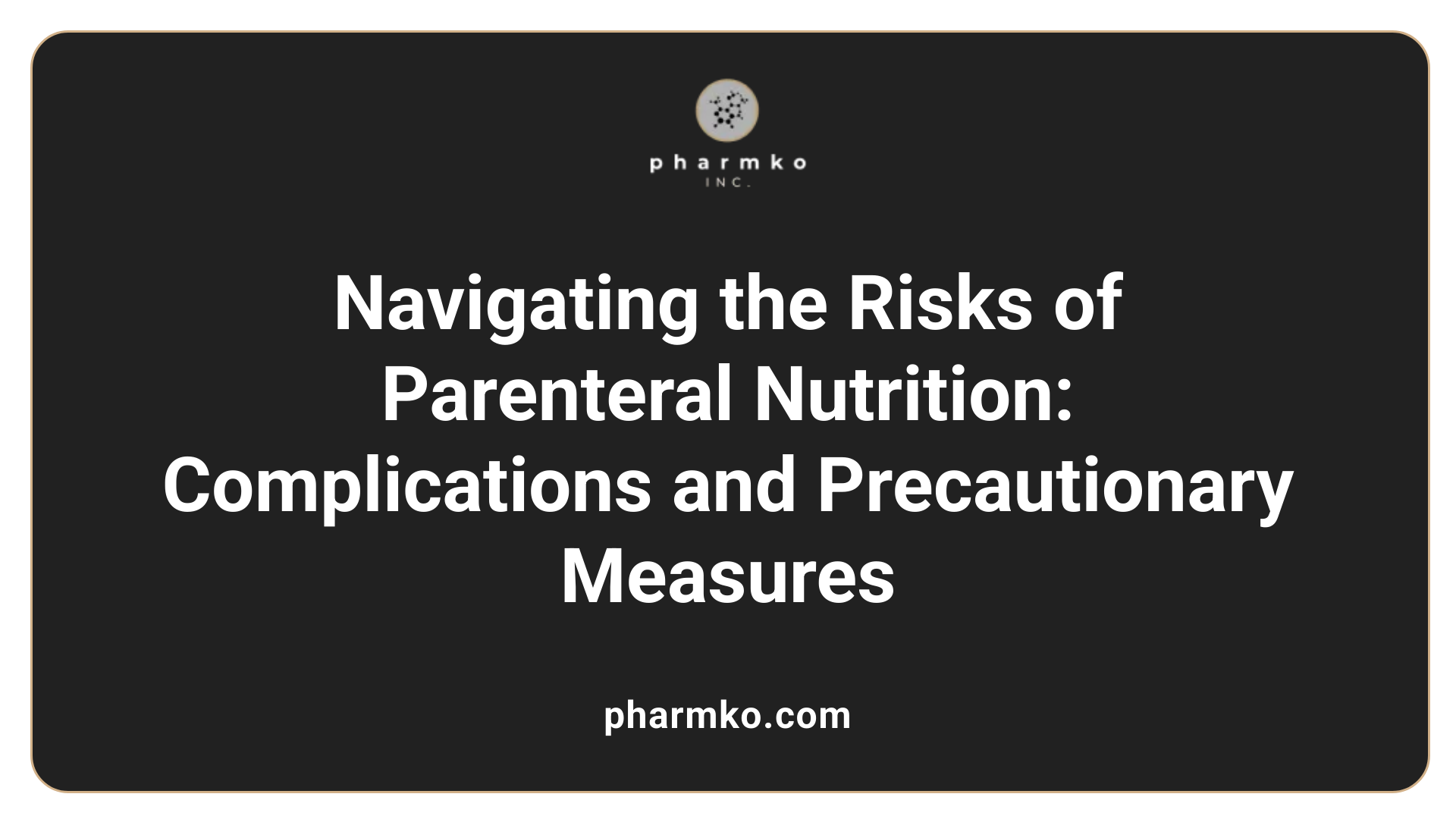
What are the complications associated with parenteral nutrition?
Parenteral nutrition (PN) is a vital therapy for patients unable to meet their nutritional needs enterally. However, it carries several potential complications that require careful management and monitoring.
One of the primary concerns is metabolic disturbances. Patients may experience hyperglycemia or hypoglycemia, electrolyte abnormalities, refeeding syndrome, and cholestasis. Cholestasis, in particular, can progress to more severe liver conditions such as fibrosis or cirrhosis, especially with prolonged PN use.
Vascular access complications are also common. Since PN is administered via central venous catheters, it poses risks such as catheter-related bloodstream infections, including central line-associated bloodstream infection (CLABSI). Thrombosis, pneumothorax from improper catheter placement, air embolism, bleeding, and vascular injury are additional hazards that can complicate therapy.
Long-term use of PN can lead to hepatic issues like fatty liver disease (hepatic steatosis), ongoing cholestasis, and liver fibrosis. These liver conditions, collectively termed parenteral nutrition-associated liver disease (PNALD), significantly impact patient outcomes. Bone diseases such as osteoporosis and osteomalacia may also develop due to mineral imbalances.
Moreover, micronutrient toxicities, notably manganese accumulation, can cause neurological symptoms and liver toxicity. The immune system can also be affected adversely, with increased susceptibility to infections, including sepsis resulting from contaminated catheters or immune suppression.
Effective management involves regular monitoring of blood chemistries, liver and kidney functions, and careful catheter care practices. Adjusting PN composition to prevent overfeeding and toxicities, along with prompt treatment of infections, are essential to minimizing these risks.
Overall, while PN is a lifesaving intervention, vigilance and multidisciplinary care are crucial to prevent and address these complications, ensuring safe and effective nutrition support for vulnerable patients.
Guidelines for Peripheral Parenteral Nutrition (PPN)
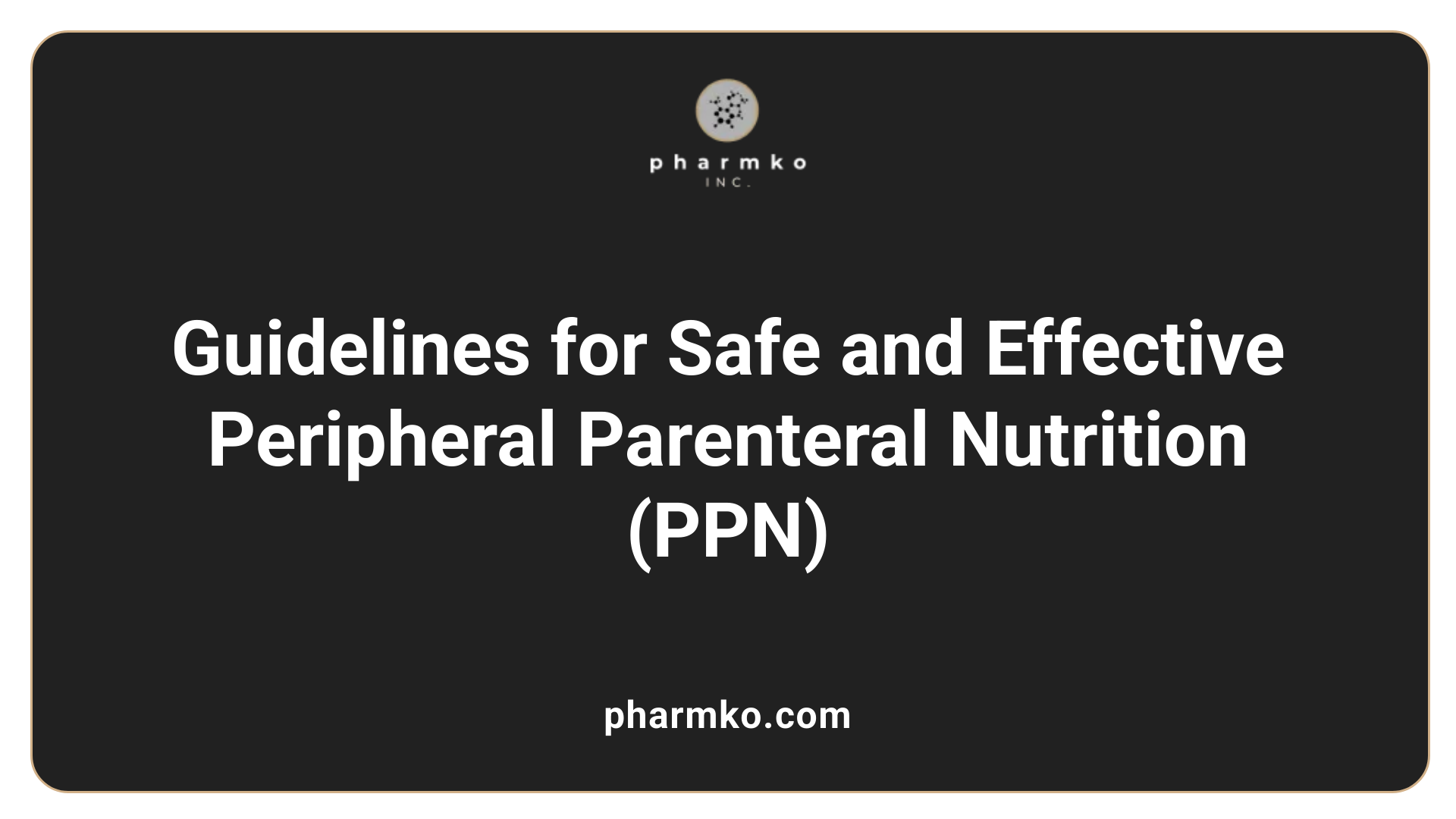
What guidelines exist for peripheral parenteral nutrition?
Peripheral parenteral nutrition (PPN) is designed for short-term use, primarily in patients who can tolerate minimal fluid loads and require less than approximately 1800 kcal daily. These guidelines ensure that PPN formulations are both safe and effective, minimizing risks such as vascular irritation or metabolic disturbances.
A critical aspect of PPN is its formulation. The dextrose concentration must be carefully limited to prevent hyperosmolarity, which can irritate peripheral veins. Lipids are included to reduce vascular damage, with recommendations that fats make up no more than 60% of total caloric intake, typically around 1.5 g/kg/day for adults. Proper formulation not only maintains nutritional adequacy but also protects the vessel walls.
Vascular access for PPN involves placing the catheter in peripheral veins, usually in the hand or forearm. Correct catheter tip positioning is essential to prevent phlebitis and other complications. Since PPN avoids the need for central venous access, it is particularly advantageous in patients where central access is contraindicated or poses a higher risk.
Monitoring plays a vital role in successful PPN management. Regular laboratory assessments, including electrolytes, blood glucose, and renal function, are recommended especially during initiation and adjustments. Close observation helps detect early signs of metabolic imbalances, infection, or vascular irritation.
Overall, following established guidelines ensures that PPN provides effective nutritional support while minimizing potential complications. Proper formulation, cautious catheter placement, and diligent monitoring form the cornerstone of safe PPN therapy.
Understanding Total Nutrient Admixture and Its Clinical Use

What is total nutrient admixture?
Total nutrient admixture (TNA) is a specially prepared intravenous solution that combines all the necessary macronutrients—such as carbohydrates (dextrose), amino acids, and lipids—into a single infusion. This comprehensive mixture aims to provide complete nutritional support for patients who cannot eat or digest food normally, especially when their gastrointestinal tract is severely compromised or inaccessible.
TNA formulations are compounded in sterile conditions to ensure safety, stability, and compatibility. This approach allows healthcare providers to administer the full spectrum of essential nutrients in one continuous infusion, simplifying treatment, reducing the number of injections, and improving patient comfort.
Advantages and disadvantages
Advantages of TNA
- Simplifies administration: Patients receive all essential nutrients in one solution, reducing the need for multiple IV infusions.
- Enhances convenience: Fewer lines and connections can minimize infection risk and improve care efficiency.
- Potential cost savings: Combining nutrients into a single bag decreases labor and resource use.
- Reduces infection risk: Fewer handling and connections lower the chance of contamination.
Disadvantages of TNA
- Stability challenges: Lipid emulsions and electrolytes can precipitate if not properly prepared and managed.
- Catheter occlusion risk: The high osmolarity and particulate load can increase the likelihood of line blockages.
- Limited flexibility: Adjusting individual nutrient components is more complex compared to separate solutions.
- Monitoring requirements: TNA requires careful monitoring to prevent imbalances or overly concentrated solutions.
Overall, TNA is a vital component in clinical nutrition, especially suited for patients with complex or inaccessible gastrointestinal functions. Proper formulation, preparation, and monitoring are key to maximizing benefits and minimizing risks.
For those seeking more information, searching "Total nutrient admixture in clinical nutrition" can provide additional insights and current research developments.
Management of Liver Dysfunction in TPN Patients
How is liver dysfunction monitored and assessed in patients receiving TPN?
Monitoring liver health in patients on TPN involves regular blood tests to evaluate liver enzymes such as ALT, AST, alkaline phosphatase, and bilirubin levels. Imaging studies like ultrasound, CT scans, or MRIs can detect structural changes including liver steatosis or fibrosis. Tracking these parameters over time helps identify early signs of liver damage or progression to cirrhosis. Close attention to clinical symptoms, such as jaundice or abdominal discomfort, further guides management.
How can TPN composition be optimized to prevent or reduce liver problems?
Adjusting the composition of TPN is crucial in managing liver complications. Utilizing lipid emulsions low in omega-6 PUFAs and phytosterols, such as fish oil-based formulations, has shown promise in reducing inflammation and reversin cholestasis. Limiting excess caloric intake from carbohydrates and lipids helps prevent fatty liver development. Incorporating nutrients like choline, taurine, and carnitine may support liver function and lipid metabolism.
What role does promoting enteral nutrition play in protecting the liver?
Encouraging early and adequate enteral nutrition maintains gastrointestinal integrity, promotes bile flow, and supports the gut barrier function. This reduces bacterial translocation and the inflammatory response, which are implicated in liver injury. When tolerated, even small amounts of enteral feeding can markedly decrease the incidence and severity of PN-related liver disease. Bowel stimulation also helps restore normal enterohepatic circulation, aiding liver health.
What pharmacological options are available for managing TPN-associated liver issues?
Medications like ursodeoxycholic acid are used to improve bile flow and reduce cholestasis. Antibiotics may be necessary to control infections that exacerbate liver injury. Emerging therapies include hepatocyte growth factors and antioxidants that combat oxidative stress. Ensuring proper management of sepsis, which can worsen liver function, is also vital. In severe cases, liver transplantation remains a definitive treatment.
How can lifestyle modifications contribute to liver health in TPN patients?
Weight management, abstinence from alcohol, and avoiding hepatotoxic drugs are essential lifestyle measures. For patients with underlying metabolic conditions like NAFLD or NASH, dietary adjustments and physical activity can alleviate liver stress. Maintaining optimal hydration and avoiding overnutrition prevent additional strain on the liver. Education and counseling play a significant role in supporting these lifestyle changes.
| Strategy | Approach | Expected Benefit |
|---|---|---|
| Monitoring | Regular labs and imaging | Early detection of liver injury |
| TPN Adjustment | Use of fish oil-based emulsions | Reduce inflammation and cholestasis |
| Promote Enteral Nutrition | Early initiation when possible | Preserve gut and liver function |
| Medications | Ursodeoxycholic acid, antibiotics | Manage cholestasis and infections |
| Lifestyle | Weight control, abstinence | Minimize liver stress and progression |
Understanding and implementing these management strategies can significantly improve outcomes for patients dependent on TPN, reducing the risk of long-term liver complications.
Composition of TPN and Its Impact on Liver Health
What is TPN in liver dysfunction?
Total parenteral nutrition (TPN) serves as a vital life-saving intervention for patients with compromised or inaccessible gastrointestinal function. However, its composition—especially when not carefully managed—can significantly influence liver health. TPN solutions typically include high concentrations of glucose, lipids, and amino acids, each playing a distinct role in nutrition but also impacting the liver.
Nutrient types and balance
The main components of TPN are carbohydrates (primarily dextrose), lipids (fats), and proteins (amino acids). These are custom-tailored to meet patient needs but must be carefully balanced to prevent complications. Excessive caloric intake—particularly from glucose and lipids—can lead to fat accumulation in the liver, known as hepatic steatosis, which can progress to inflammation and fibrosis.
Effects of glucose, lipids, and amino acids
Glucose overload can cause insulin resistance and hepatic steatosis, while high lipid doses—especially those rich in omega-6 polyunsaturated fatty acids (PUFAs) from soybean oil—are linked to oxidative stress and inflammation, contributing to liver injury and cholestasis. Amino acids are essential but, if provided in excess or with certain imbalances, can add to metabolic stress and further liver damage.
Recent studies support reducing soybean oil-based lipids and incorporating alternative emulsions like fish oil, which contain omega-3 fatty acids with anti-inflammatory properties. These adjustments can help lower the risk of PN-associated liver disease (PNALD).
Role of micronutrients and additives
Micronutrients such as copper and manganese, often present in TPN, can accumulate in the liver and cause hepatotoxicity, especially in cholestatic conditions. Supplementing with choline, taurine, and cysteine has been explored to prevent hepatic steatosis and improve liver function. Furthermore, antioxidants like α-tocopherol (vitamin E) may mitigate oxidative damage caused by lipid peroxidation.
Summing up
Careful formulation and ongoing monitoring are crucial to minimize TPN's adverse effects on the liver. Adjusting lipid composition, controlling caloric excess, and managing micronutrient levels can significantly reduce the risk of liver injury, helping improve patient outcomes and quality of life.
Therapeutic Strategies for TPN-Associated Liver Disease
Managing liver complications linked to Total Parenteral Nutrition (TPN) involves a multifaceted approach. One of the primary strategies is adjusting lipid formulations. Traditional soybean oil-based emulsions, rich in omega-6 polyunsaturated fatty acids (PUFAs) and phytosterols, are associated with increased inflammation and cholestasis. Replacing these with alternative lipid emulsions, such as fish oil-based products that contain omega-3 PUFAs, has shown significant benefits. These emulsions reduce inflammation, oxidative stress, and improve or resolve cholestasis.
Medications also play a vital role. Ursodeoxycholic acid, for example, can enhance bile flow and decrease bile stasis, offering some relief from cholestasis. Additionally, addressing bacterial overgrowth and preventing sepsis are crucial since infections contribute to liver injury. Stringent aseptic techniques for catheter management, early detection, and treatment of infection are essential.
In severe cases where liver damage persists or progresses, advanced interventions like transplantation become necessary. Small bowel or combined liver and small bowel transplants are options for patients with irreversible liver failure due to TPN effects.
How do you treat parenteral nutrition-associated cholestasis?
The only effective treatment currently known is to discontinue TPN and initiate full enteral feeding, which helps re-establish normal bile flow and reduces liver stress.
These combined strategies, rooted in modifying nutritional components and managing complications, greatly improve outcomes and reduce the progression of liver disease in patients requiring long-term parenteral nutrition.
Emerging Research and Guidelines in TPN-Related Liver Management
How is current research shaping management strategies for TPN-associated liver issues?
Recent guidelines emphasize a multifaceted approach to managing liver complications related to total parenteral nutrition (TPN). Central to these strategies is optimizing the composition of TPN solutions. This involves reducing or replacing traditional soybean oil-based lipid emulsions, which contain phytosterols implicated in promoting cholestasis and liver injury. Instead, fish oil-based emulsions rich in omega-3 fatty acids are being increasingly recommended. These alternatives exhibit anti-inflammatory properties, help improve liver function, and have demonstrated success in reversing established liver disease in clinical studies.
Promotion of early enteral nutrition plays a critical role in current management. When tolerated, early initiation of enteral feeds supports gastrointestinal barrier integrity, enhances bile flow, and minimizes the detrimental effects of prolonged TPN. Regular assessment of liver function tests, including bilirubin, ALT, and AST levels, allows for early detection of liver dysfunction, enabling timely intervention.
Pharmacological agents and new therapies are being explored to add further protection. Ursodeoxycholic acid, for example, can improve bile flow and help prevent cholestasis. Antibiotics may be used to address bacterial overgrowth, which can exacerbate liver injury, while micronutrient supplementation—including vitamins D and zinc—supports overall liver health and immune function.
Ongoing research also investigates advanced therapies and biomarkers to personalize treatment. Emerging treatments targeting the gut-liver axis, such as probiotics, bile acid modulators, and agents that enhance intestinal barrier function, show promise. In severe or refractory cases, transplantation remains a last resort, but current guidelines highlight the importance of preventively managing risk factors to avoid reaching that stage.
Overall, comprehensive monitoring, individualized nutritional plans, and proactive treatment are fundamental to evolving guidelines aiming to reduce the incidence and severity of liver disease associated with long-term TPN use.
Future Directions and Expert Recommendations
Advances in understanding the pathogenesis of TPN-related liver dysfunction have led to refined management strategies emphasizing early detection, modification of TPN compositions, promotion of enteral nutrition, and innovative pharmacological approaches. Regular monitoring remains crucial for timely intervention. The adoption of lipid emulsions rich in omega-3 fatty acids, along with personalized nutrition plans and multidisciplinary care, can significantly mitigate liver injury and improve long-term outcomes. Ongoing research and clinical trials continue to shape guidelines, aiming to reduce the morbidity and mortality associated with TPN-associated liver disease. Collaboration among healthcare providers, researchers, and patients is essential to develop patient-centered, evidence-based protocols that support liver health during necessary parenteral nutrition therapy.
References
- Total Parenteral Nutrition - StatPearls
- Treatment of Parenteral Nutrition-Associated Liver Disease
- Understanding TPN-Related Transaminitis: Causes & ...
- Preventing parenteral nutrition liver disease
- Top Tips for Managing Abnormal Liver Function Tests in ...
- Pathogenesis and treatment of parenteral nutrition- ...
- Liver complications of total parenteral nutrition: the latest ...



